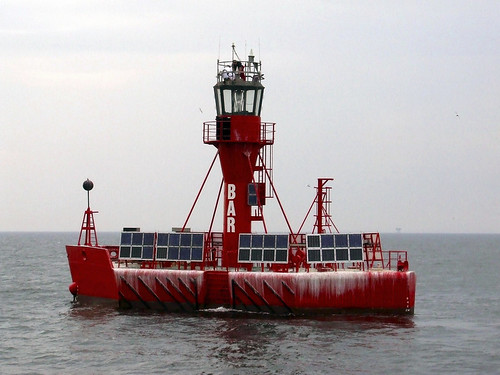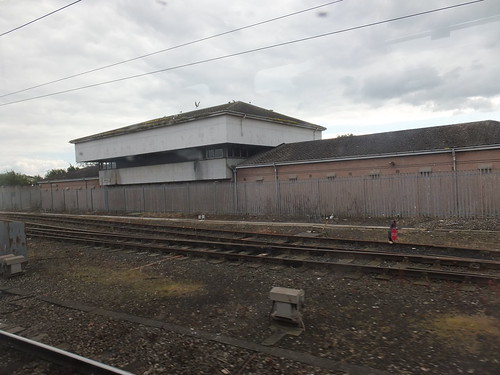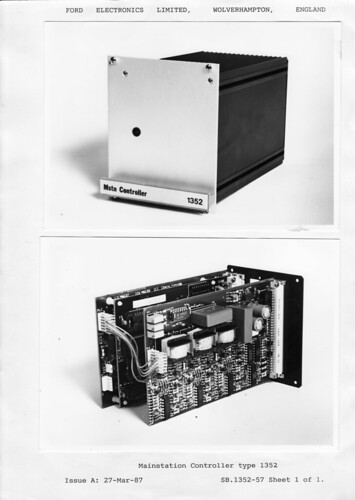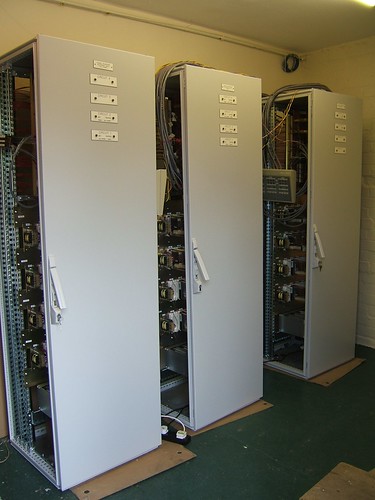skip to main |
skip to sidebar
My trips to Liverpool are normally by train but much of the city's fame arises from its importance as a sea port, situated on the River Mersey. Arriving at Liverpool by sea involves various problems for mariners - the River Mersey has the second highest tidal range in Britain, with spring tides exceeding 10 metres and entrance to the river from the sea is impeded by Coastal Bars.
Coastal Bars
Coastal bars (often referred to simply as 'Bars') are shallows or shoals in the sea bed formed by the movement of sand and sediments where the tide meets the flow of a discharging river. Navigating through these areas is called "Crossing the Bar". Apart from the risk to ships of grounding on a bar, in some weather conditions seas breaking over the bar create additional hazards, requiring good local knowledge for safe passage.
Liverpool Shipping in 1870
Commenting on the approach to Liverpool from the sea, the 'West Coast Pilot' for 1870 states "The numerous sands which encumber the entrance of the Mersey will be better understood by a reference to the chart than by reading the most elaborate description." At that time, there were various land-based lighthouses, three light vessels (North West, Formby and Crosby) and an elaborate system of buoys to identify the channels. Because of these hazards, it was compulsory for all ships to take a pilot with up-to-date local knowledge. There were 12 pilots who cruised in pilot sailing boats, ready to board ships and take charge of the navigation. The pilots were controlled by Mersey Docks and Harbour Board.
Continued dock expansion
The success of the port of Liverpool meant that expansion of the docks continued until the 1920s (see Notes on Liverpool and its Docks). During this period, steam propulsion replaced sail, iron and steel replaced wooden construction and vessel sizes increased, so that most shipping became concentrated in the dredged channel now known as Queen's Channel with the 'Bar' lightship serving as the pilot rendezvous location for inbound ships.
Liverpool 'Bar' Lightship
In 1947, the 'Bar' lightship duty was being carried out by the 'Alarm', shown in the aerial view below.

Mersey Bar Lightship 'Alarm' and SS 'Collegian', Liverpool Bay, 1947.
The firm of Philip and Son built the relacement lightship 'Planet' in 1969 which, with its crew of seven, became the Mersey 'Bar' lightship. There's a Wikipedia article on the lightship builder here. In 1972 an unmanned buoy replaced the lightship which was sold to Trinity House and continued to serve at various sites before being retired in 1989. Saved for preservation from the breakers, she eventually saw service as a cafe/bar and museum whilst moored in Canning Dock, Liverpool, where I took the photograph below.
 The preserved Lightship 'Planet' in Canning Dock, Liverpool.
The preserved Lightship 'Planet' in Canning Dock, Liverpool.
Following a long-running dispute between the owner of 'Planet' and the Canal and River Trust, the lightship was seized by bailiffs in 2016 and towed to Sharpness where it faces an uncertain future. There's more information about 'Planet' on the interesting Offshore Radio Museum Site.
The unmanned buoy which replaced 'Planet' in 1972 was known as a Large Automatic Navigation BuoY (LANBY buoy). The design, featuring a circular hull and central mast provided with a powerful light, originated in America and was adapted for use in Britain. According to research by the Mersey Lightvessel Preservation Society, the LANBY buoy was, in turn, replaced in 1993 by what I believe is still the current installation known as Light Float 'Bar Racon' and operated by Trinity House.
'Bar Racon'
The addition of 'Racon' to the name indicates that, in addition to the normal light signal, the installation provides an identifiable radar return (the name is a contraction of RAdar beaCON). The widespread introduction of Radar on ships represented a significant advance in safety and the addition of a radar transponder to a buoy means that, when the transponder receives a radar pulse from a ship, it transmits a return signal including a simple identity, which assists the correct identification of the radar return received by the ship.
 Light float 'Bar Racon' in Liverpool Bay (Photo: Fuelcellworks).
Light float 'Bar Racon' in Liverpool Bay (Photo: Fuelcellworks).
An article in Fuelcellworks here discusses the installation of a methanol fuel cell to improve the endurance of the light float.
'Crossing the Bar'
The term is familiar to many people as the title of a short poem by Alfred, Lord Tennyson (1809-1892), a celebrated poet from the Victorian era whose works remain popular. He uses leaving harbour and sailing out to sea as a metaphor for dying.
Sunset and evening star
And one clear call for me!
And may there be no moaning of the bar,
When I put out to sea,
But such a tide as moving seems asleep,
Too full for sound and foam,
When that which drew from out the boundless deep
Turns again home.
Twilight and evening bell,
And after that the dark!
And may there be no sadness of farewell,
When I embark;
For though from out our bourne of Time and Place
The flood may bear me far,
I hope to see my Pilot face to face
When I have crossed the bar.

Alfred, Lord Tennyson with his wife Emily and sons Hallam and Lionel.
Wikipedia has an article on 'Crossing the Bar' here, suggesting that the verses were inspired by a crossing of the Solent to his home at Farringford House on the Isle of Wight. There's more about Farringford House and the famous people who settled in the area at the website Tennyson’s Celebrity Circle.
Liverpool Shipping today
Shipping in the Mersey today is very different from that in 1870 but sands remain a problem and continuous dredging operations are necessary to allow large, modern ships access and charts are still essential (although, increasingly, those charts are electronic). Although the structures of the former light houses survive, none are now active light houses but the "elaborate system of buoys" already established in 1870 has been modernised and complies with one (of two) internationally-recognised systems of navigation buoys. But, despite all the improvements brought about by the use of radio, radar, AIS and Electronic Chart Display and Information Systems (ECDIS) which I discussed in the post Watching The Ships Go By, the system of using a human pilot with hard-earned experience of the local conditions remains a vital part of bringing ships safely in and out of the Mersey.
My first, short post on the subject of 'Work', back in 2007, is here. It's a theme I've returned to erratically since and you can find all these posts here (or click on 'Work' in the 'Labels to select a blog topic' list). This post gives a little more information on some of the projects I've worked on, mainly covering railway projects up to around 2000. In the future, I hope to write a little about early industrial projects and more recent activities.
The post The World of Work described my introduction to industrial electronics when I worked at Contactor Switchgear (Electronics) Limited in Wolverhampton.

This cast nameplate (in various sizes) was attached to panels made by Contactor Switchgear Limited (Photo: Wolverhampton History and Heritage Website).
In 1966, I decided to set-up on my own, and the post Starting my own business describes the initial slow progress, producing industrial control equipment for a few clients before my former employers asked if I could design and build a Ships Movement Indicator for Dover Harbour Board. With help from friends who had also moved on from Contactor Switchgear(Electronics) Limited, we produced the remarkable affair and commissioned it in the windswept Dover Harbour Port Control building on the Eastern Arm breakwater projecting into the English Channel. The specifiers of the equipment had not troubled to ask the users what they needed resulting in the equipment being unloved by the people it was intended to help and it was removed after a few years service. Later in my career, I learnt that the Ships Movement Indicator project was by no means unique in failing to determine the real needs of the intended users. I'd invested so much energy in doing the best job I could, when the redundant system was offered at scrap price, I bought the equipment back and it still moulders in storage.
The above post Starting my own business also describes the selective call equipment we produced for Gerry Gardner for use over private mobile radio. This work was more successful and I learnt a lot from our gruff, rather eccentric client. I also experienced my first flight, described My First Flight.
I managed a few more light aircraft trips in connection with the business. starting with a flight to a steelworks on Teesside, described here. This resulted in our producing Electronic Vibratory Feeder equipment for a number of steelworks on Teesside and elsewhere. There's an introductory article on my association with steelmaking here but I hope to recount more experiences in the future.
In those early days, we produced a few small railway telephone systems. Two were for the Kowloon-Canton Railway: one (for ML Engineering) which they installed at the Hung Hom terminus in Hong Kong and, later, one (for Westinghouse Brake and Signal) for Sha Tin. Westinghouse Brake and Signal also ordered small railway telephone systems for use at the modernised steelworks at Redcar and Ravenscraig.
In 1970, based on the success of our selective call equipment for Gerry Gardner, British Rail approached us about the possible supply of selective call telephone equipment for use over wire. This was in connection with the electrification between Crewe and Carlisle. The above post Starting my own business includes a brief account of this period. Up to around 1980, we periodically received further orders for this equipment, involving large numbers of waterproof trackside telephones and electronic equipment racks at the Power Signal Boxes at Warrington, Preston and Carlsle.

Carlisle Power Signal Box.
Westinghouse Brake and Signal gave us an order in 1972 for a new design of selective call telephone equipment for use on the Centralised Traffic Control (CTC) scheme between Dublin and Ballybrophy in the Republic of Ireland. Various staff from Ford Electronics, including the writer, made a number of trips to Eire during the installation and commissioning phases. It was an interesting time which I've not yet described and, at the moment, there are no pictures.
Around that time, we also produced electronic Signal Post Telephone (SPT) equipment which was installed in Northern Ireland, a few locations on British Rail and at one or two Power Stations.
The original selective call telephone systems for British Rail were fairly successful, leading to further development resulting in an enhanced version with multi-party conference capability for use as Electrification Telephones. This equipment is outlined in the post Electrification Telephone Systems for British Rail. Altogether, we supplied equipment for three installations of this type of system for London Midland, Scottish and Eastern Regions of British Rail. This, and sub-contract manufacture of other telecommunications equipment for British Rail kept us busy for a few years.
In 1976, we negotiated a large order from G.E.C. to supply a specially-designed selective call telephone system for use on the Trunk Line Electrification Project in Taiwan. I learned many valuable lessons working for G.E.C. which I talk about in the post Working for the Big Boys. The G.E.C. order included modular telephone concentrators and a large number of trackside Wayside Telephone boxes mounting a multi-circuit telephone and disconnection terminals for the lineside telephone cables. On this project, the consultants were German so, in the design stages during 1976, that gave me a couple of visits to Frankfurt. Commissioning and resolving problems which arose with the selective call system resulted in my making, I think, three visits to Taiwan during 1977 and 1978. There are no technical reports at present but my vivid impressions on my first visit to Taiwan are in the post My first visit to Taiwan. We received further orders for this equipment in 1981, 1988, 1990 and 1991.

Housing for trackside Wayside Telephone: The upper compartment mounts a multi-circuit telephone, the lower compartment is used for cable termination, equipment mounting and power supplies.
Canadian Aid funded an interesting railway traffic control system for Malawi in 1977. We produced what we thought was a neat electronic version of the venerable Western Electric electromechanical impulse selective telephone equipment. Standard Telephones and Cables produced electromechanical equipment similar to the Western Electric equipment for a time and adapted the signalling principles in their electromechanical Signal Post Telephone equipment widely used on British Rail. Despite the elegance of our system, we didn't have much commercial success.
By this time, I seemed to have gained some sort of reputation and I was flattered when the mighty Philips invited me to do some consultancy work on railway telecommunications in 1980. This interesting period is touched on in the post Working in Holland.
Iraq were building a new railway linking Mosul, Kirkuk and Haditha (at that time, oil-rich Iraq was regarded as an attractive client although I had my doubts). Philips were bidding to the Korean firm Hyundai for the telecommunications package for the railway but they ultimately walked away, convinced they couldn't make a profit at the price Hyundai was prepared to pay. There's a report here. Despite some disappointment, the wisdom of their decision was not lost on me and when, some months later, G.E.C. offered me a large sub-contract for the same project although we were short of work I declined. As I watched G.E.C. lose significant sums of money on the scheme and their chosen sub-contractor fall into bankruptcy, I regarded my decision as one of the best I'd made.
We produced another large system of railway selective call telephone equipment for G.E.C. in 1985, when the Ferrovia do Aco in Brazil was electrified to bring iron ore from the mountains near Belo Horizonte down to the deep-water port at Sepetiba. It had been arranged that I would visit Brazil in connection with the commissioning but, to my disappointment, it didn't prove necessary and my first visit to Brazil was not until 2005 (forming part of the trip 'Round the World 2': e-mails sent to friends from that trip were subsequently converted to the blog post here). We received a further order for test equipment for use on the Brazil system in 1991.

Mainstation Controller type 1352 is part of the system supplied to the Ferrovia do Aco. The rugged aluminium module housing is common to the whole range. The lower view shows the printed circuits assembled onto the back panel with the case removed.
In 1987, we did an interesting project with STC Telecommunications who, by then, were part of Northern Telecomm in which we licensed one of our selective telephone system designs, allowing STC Telecommunications to procure and build the equipment at their manufacturing site in South Wales. The equipment was to re-equip the Suburban railway network around Mumbai (which, back then, was still called Bombay). I didn't get to visit India during that commissioning, either, so my first trip to India was in 1992, in connection with commissioning equipment for the Delhi Ring (described later in this report).
G.E.C. bid on a project in 1987 to replace ageing electromechanical Train Despatcher Telephone Systems throughout Thailand. The equipment being replaced was impulse-selective equipment built by Standard Telephones and Cables in England of the pattern mentioned in the paragraph on Malawi above. The project was being funded by Japan so the consultants were Japanese and the specification had been very tightly-drafted in a way that made it very difficult to offer a compliant bid. There were many ups and downs on this project, not least because G.E.C. had seriously underestimated the costs of installation and commissioning in Thailand. For many months, we had an engineer based in Thailand, providing technical assistance to G.E.C. and training Thai Railways staff. I also made five visits in 1988 and 1989 during which I travelled widely around the country. At the completion of the project, G.E.C. held an 'I & C Seminar' in Bangkok which has a report here, with links to my pictures (scanned from 35mm prints).

Train Despatcher Equipment for Thailand under test in Wolverhampton.
When G.E.C. provided telecommunications systems for the Delhi Ring resignalling project, they decided to contract another company for the selective call telephones. However, serious problems were experienced with speech quality when the system was installed in 1992 and we were asked to urgently look at the problem. We didn't see a major difficulties with the basic selective call telephone system but the problems in transmitting over a complex loaded cable network had not been fully understood. We re-designed the audio transmission, using a network of 2-wire adaptive audio repeaters with programmable build-out for use on loaded lines and associated battery-backed power supplies. I was in India almost seven weeks installing and commissioning our modifications. There's a short post here with a link to a more detailed report.
In 1993 G.E.C. asked us to quote for Tunnel Telephone Equipment for the new Jubilee Line Extension Project. None of our existing designs of telephone system seemed adaptable - the major function of the Tunnel Telephone system is to provide a highly-dependable emergency shutdown system for the traction current. I recommended that they try Westinghouse (who had, I'd found out, previously supplied tunnel telephone equipment for the Central Line). A few months later, G.E.C. repeated the request and this time we agreed to quote. We supplied the equipment for the Jubilee Line Extension and we're still occasionally supplying tunnel telephone equipment for use on London Underground. There's more in the post London Underground and Jan.

Tunnel Telephone Cubicles for Northern Line under test in Brewood.
More when I can.
Related posts on this website
For ease of reference, this list duplicates links in the above text.
Work.
The World of Work.
Starting my own business.
My First Flight.
here.
Visiting Steelworks.
Electrification Telephone Systems for British Rail.
Working for the Big Boys.
My first visit to Taiwan.
Working in Holland.
Visit to Seoul, South Korea.
Round The World Two.
Train Dispatcher Project - Thailand.
My first trip to India.
London Underground and Jan.
Liverpool, the River Mersey and Merseyside have interested me since my childhood visits. My first blog post was simply called Liverpool but there a quite a few now. You can find them all here (or click on 'Merseyside' in the 'Labels to select a blog topic' list). Although my home is some 80 miles from Liverpool, through the magic of the Internet I can "watch" shipping around Liverpool.
Wirralcam.org
'www.wirralcam.org' operate a number of webcams giving still pictures, generally updated twice a minute, from various locations on the Wirral. This offers an intriguing view of ships coming and going but, of course, doesn't provide information on the identity of the vessels or their itineraries.

Webcam view of the Mersey from Birkenhead Priory, with the twin towers of the Liver Building on the left and Albert Dock in the centre (Picture: wirralcam.org).
Automatic Identification System (AIS)
As an aid to maritime safety, most modern ships are fitted with Automatic Identification System (AIS) equipment, mandated by the International Maritime Organisation (IMO) under their Safety of Life at Sea (SOLAS) regulations. AIS installations on ships combine data regarding the ship's identity, destination, location as determined by GPS (Global Positioning System) equipment, together with heading and speed and transmit it periodically digitally by VHF (Very High Frequency) radio. The data is received and decoded by other ships in the vicinity and, where there is line-of-sight communication, also by various shore stations. Many ships also send and receive AIS data using Inmarsat communications satellites which (via satellite downlinks) makes the data available to ground stations lacking line-of-sight VHF communications with a ship. With digital communications and the internet, AIS data around the globe can be consolidated into vast databases of shipping movements. There's a Wikipedia article about AIS here. For a more detailed treatment, try the PDF of the recommendation covering AIS issued by the International Telecommunications Union (ITU) M.1371-1 here. I think the standard is now at M.1371-4 but the PDF linked should give an idea of the complexity of the requirements. Atlantic Source is a Spanish supplier of AIS and other communications equipment whose website may be of interest.
Maritime Mobile Service Identity (MMSI)
AIS equipment makes use of a vessel's unique Maritime Mobile Service Identity (MMSI) which is described in another Wikipedia article here. Note that whilst MMSI, heading, speed and position are automatically derived from ship sensors, some data like destination and status ('underway', 'at anchor') is manually entered by the bridge crew and is sometimes inaccurate, so don't be surprised if a ship supposedly at anchor is making 15 knots! Because the AIS data can be transmitted by VHF radio, drop-outs or temporarily erroneous data are also possible.
IMO identification number
Most merchant ships are allocated an IMO identification number, displayed on the vessel, intended to enhance "maritime safety, and pollution prevention and to facilitate the prevention of maritime fraud". There's a Wikipedia article here.
Commercially-accessible data
Commercial sites like 'Marinetraffic.com' and 'Vesselfinder.com' collect and analyse data transmitted by ships fitted with AIS and make certain information freely available (with other information hidden behind a 'paywall'). These sites have vessel details and photographs in addition to information about present position and previous voyages. You can search for a particular vessel by name, MMSI or IMO.
The ShipAIS site
To display AIS data for shipping around Liverpool at home, I like enthusiast-run site ShipAIS with its sub-title "Watching the boats go by" which offers excellent coverage of Liverpool and other areas. I tend to default to the Liverpool Docks page here (which will update every 2 minutes), switching to the geographically-adjacent Bar Racon or Mersey River pages as necessary. They have a useful Frequently Asked Questions page here (which has thoughtful comments about security concerns which have been raised about the wisdom of making shipping movement data widely available). The site can also display each vessel's MMSI number (which is unique), name (which may not be unique) and IMO identification number (where allocated). There may also be other data and a photograph of the vessel.
Remote Ship Watching
The ShipAIS page will show vessels in the area covered by the map and some of these may be visible on one or more Wirralcam.org cameras. Unrecognised ships or vessels of particular interest can be followed up using the free data on one of the commercial sites. I find the quickest is often to give Google the search string , for instance 'ship 235112573', which quickly finds various offerings for ACL's Ro-Ro/Container ship 'Atlantic Star' on sites like 'Marinetraffic.com' and 'Vesselfinder.com'. More technical information may be available on the shipping line site, for instance, ACL have more information on this '4th Generation CONRO vessel' here.
Improved ship safety
The ability to remotely watch ships I find impressive but, of course, the justification for all these systems is improved ship safety. The introduction of Radar and Radiotelephony were significant milestones but, on many modern ships, the integration of electronic charts, radar, GPS, AIS and information from various ship systems into what's called Electronic Chart Display and Information Systems (ECDIS) furnishes a whole new level of safety-related information which can automatically generate alerts to potential hazards. There's an introductory article about ECDIS on Wikipedia here. As mentioned in some of my travel posts, I've managed to visit the bridge of a few vessels equipped with ECDIS and been fascinated. I'll write a little more when I can.

 The preserved Lightship 'Planet' in Canning Dock, Liverpool.
The preserved Lightship 'Planet' in Canning Dock, Liverpool.
 Light float 'Bar Racon' in Liverpool Bay (Photo: Fuelcellworks).
Light float 'Bar Racon' in Liverpool Bay (Photo: Fuelcellworks).








